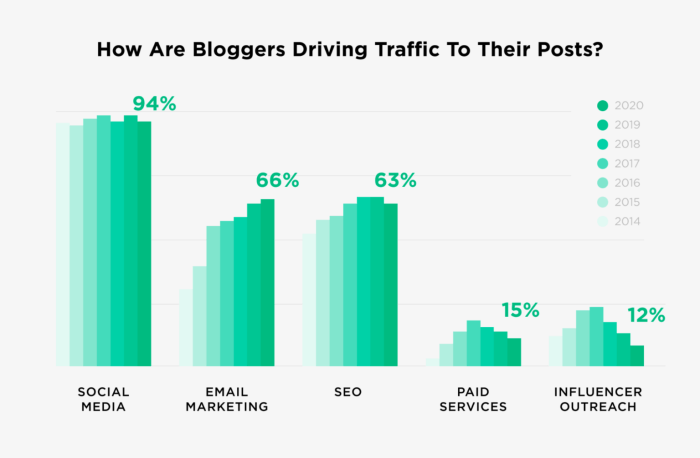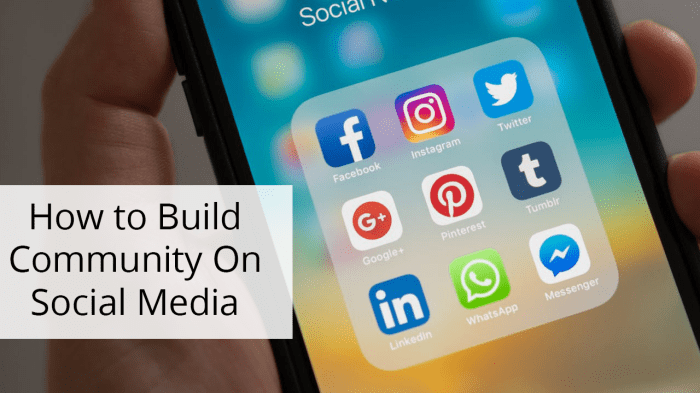Building a Content Community sets the stage for creating a thriving online presence that fosters brand loyalty and collaboration. Get ready to dive into effective strategies and engaging content tips in this dynamic journey.
Importance of Building a Content Community

Building a strong content community is essential for online engagement as it creates a sense of belonging and connection among users. It allows brands to interact directly with their audience, fostering a loyal and engaged following.
Driving Brand Loyalty and Advocacy
A robust content community can drive brand loyalty and advocacy by building trust and credibility with the audience. When users feel a connection to a brand through valuable and engaging content, they are more likely to become loyal customers and advocates who spread the word to others.
Fostering Collaboration and Knowledge Sharing
A content community plays a vital role in fostering collaboration and knowledge sharing among users. By providing a platform for interaction and discussion, brands can tap into the collective expertise of their community members, leading to valuable insights, ideas, and innovation.
Strategies for Building a Content Community

Building a strong content community requires strategic planning and consistent effort to engage and retain members over time. Here are some effective strategies to help grow and nurture a content community:
Utilize Multiple Platforms
To reach a wider audience and attract diverse members, it’s crucial to leverage different platforms such as social media, forums, and email lists. Each platform offers unique opportunities to connect with your audience and share valuable content.
- Social Media: Platforms like Facebook, Instagram, Twitter, and LinkedIn allow you to engage with followers through posts, stories, and live sessions. By sharing relevant content and interacting with users, you can build a loyal community.
- Forums: Online forums like Reddit, Quora, and specialized industry forums provide a space for in-depth discussions and knowledge sharing. Participating in these forums and providing valuable insights can help establish your authority and attract community members.
- Email Lists: Building an email list enables you to directly communicate with your audience through newsletters, updates, and exclusive content. By delivering personalized content to subscribers, you can strengthen relationships and foster a sense of belonging.
Consistency and Authenticity
Consistency in posting content and maintaining authenticity are key factors in engaging and retaining community members. By creating a content schedule and sticking to it, you can establish a reliable presence and keep followers interested. Authenticity, on the other hand, involves being genuine, transparent, and true to your brand values. When community members feel a real connection with your content, they are more likely to stay engaged and loyal.
Engage with Your Audience
Interacting with your audience is essential for building a strong community. Responding to comments, messages, and feedback shows that you value their input and care about their opinions. Hosting Q&A sessions, polls, and contests can also encourage active participation and strengthen community bonds.
Celebrate Milestones and Recognize Members
Acknowledging and celebrating community milestones, such as reaching a certain number of followers or completing a successful campaign, can foster a sense of achievement and unity among members. Recognizing and highlighting the contributions of active community members through shoutouts, features, or rewards can also motivate others to participate and engage.
Collaborate with Influencers and Partners
Partnering with influencers, industry experts, or complementary brands can help expand your reach and attract new members to your community. Collaborations offer fresh perspectives, diverse content, and increased visibility, enhancing the overall value and appeal of your community.
Engaging Content for Community Building
When it comes to building a strong content community, creating engaging content is key. This type of content resonates with your target audience, keeps them coming back for more, and encourages interaction within the community. Here are some tips on how to create content that truly engages your audience:
Storytelling and Personalization
Storytelling is a powerful tool when it comes to connecting with your community members. By sharing personal stories, experiences, or even anecdotes, you can create a sense of relatability and emotional connection with your audience. Personalizing your content by addressing your community members directly, using their names, and acknowledging their contributions can make them feel valued and appreciated.
- Use real-life examples and anecdotes to make your content more relatable.
- Address your community members directly to create a sense of personal connection.
- Acknowledge and appreciate the contributions of your community members to foster a sense of belonging.
Interactive Content
Interactive content, such as quizzes, polls, and live sessions, can significantly enhance community engagement. These types of content encourage active participation from your audience, making them feel involved and invested in the community. Quizzes and polls can spark discussions and debates, while live sessions allow for real-time interaction and feedback.
- Create quizzes and polls to encourage participation and gather feedback from your community.
- Host live sessions to interact with your audience in real-time and address their questions or concerns.
- Encourage discussions and debates by posing thought-provoking questions or topics for your community to engage with.
Community Management Best Practices
Effective community management is essential for the success of any content community. It involves handling feedback, conflicts, and moderation, while also building trust and fostering a sense of belonging among community members.
Handling Feedback, Building a Content Community
Receiving feedback is crucial for community growth. Respond promptly, show appreciation for the feedback, and take constructive criticism positively. Use feedback to make improvements and involve the community in the decision-making process.
Handling Conflicts
Conflicts are inevitable in any community. It’s essential to address conflicts promptly, fairly, and privately if possible. Encourage open communication, active listening, and find common ground to resolve conflicts amicably. Establish clear guidelines for behavior and enforce them consistently.
Moderation Practices
Moderation is key to maintaining a positive community atmosphere. Establish clear rules and guidelines for content creation and interaction. Monitor discussions regularly, remove inappropriate content, and address violations promptly. Encourage respectful behavior and create a safe space for all community members.
Building Trust and Fostering Belonging
Building trust takes time and effort. Be transparent, authentic, and engage with your community regularly. Show empathy, respect diversity, and celebrate community achievements. Encourage collaboration and empower community members to take ownership of their contributions. By fostering a sense of belonging, you create a community that thrives and grows together.







